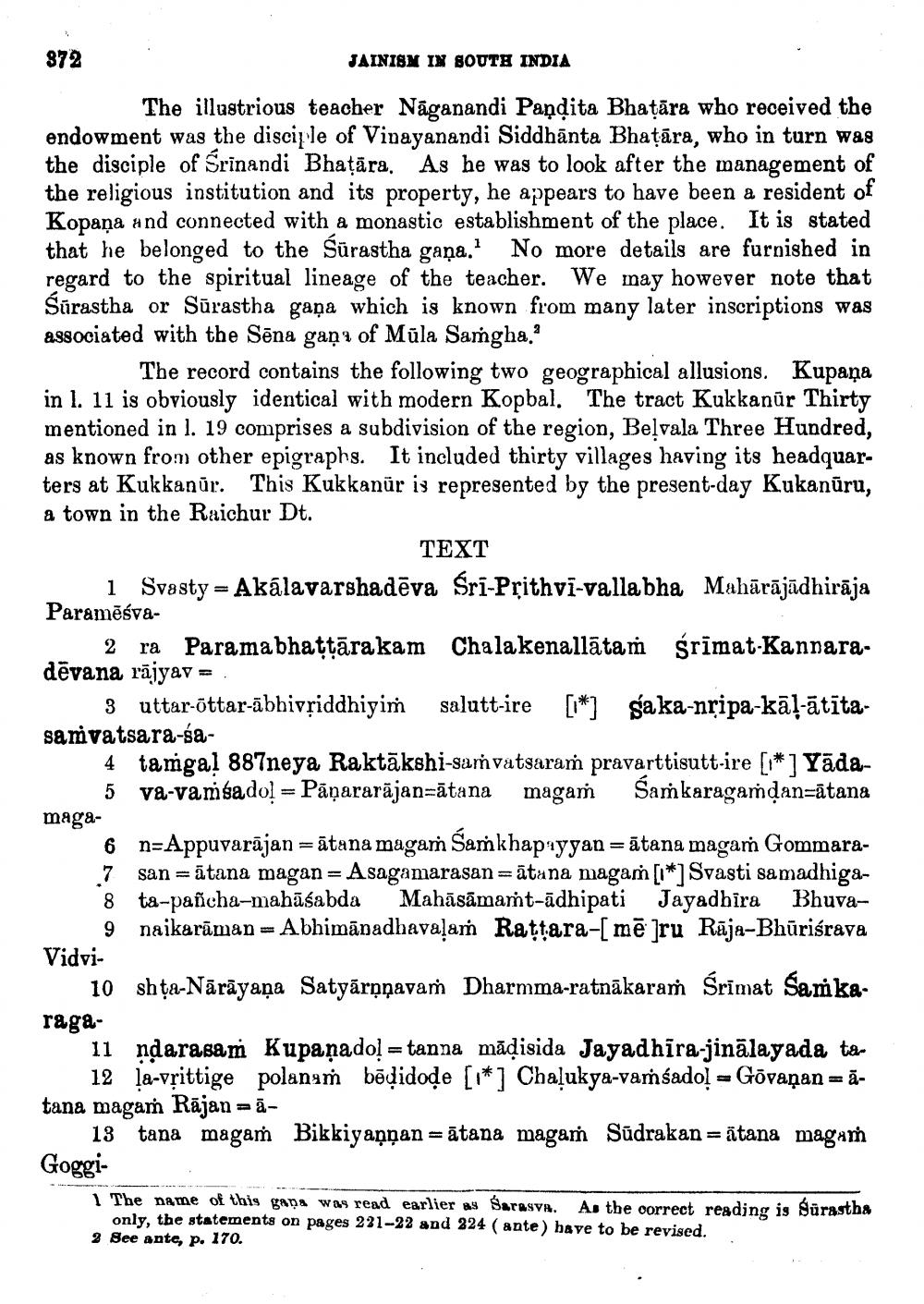________________
872
JAINISM IN SOUTH INDIA The illustrious teacher Nāganandi Pandita Bhatāra who received the endowment was the disciple of Vinayanandi Siddhānta Bhatāra, who in turn was the disciple of Srinandi Bhatāra. As he was to look after the management of the religious institution and its property, he appears to have been a resident of Kopaņa and connected with a monastic establishment of the place. It is stated that he belonged to the Sūrastha gaña. No more details are furnished in regard to the spiritual lineage of the teacher. We may however note that Śūrastha or Sūrastha gaṇa which is known from many later inscriptions was associated with the Sēna gana of Mūla Samgha.
The record contains the following two geographical allusions. Kupaņa in l. 11 is obviously identical with modern Kopbal. The tract Kukkanūr Thirty mentioned in l. 19 comprises a subdivision of the region, Belvala Three Hundred, as known from other epigraphs. It included thirty villages having its headquarters at Kukkanūr. This Kukkanür is represented by the present-day Kukanūru, a town in the Raichur Dt.
TEXT i Svesty = Akálavarshadēva Śrī-Prithvi-valla bha Mahārājādhirāja Paramēśva
2 ra Paramabhattāra kam Chala kenallātań śrīmat-Kannaradēvana rājyav = .
3 uttar-õttar-ābhivșiddhiyiṁ salutt-ire [*] Saka-nripa-kāl-ātītasamvatsara-sa
4 tamgal 887neya Raktākshi-samvatsaram pravarttisutt-ire [*Yāda
5 va-vamsadol = Pāṇararājan=ātana magam Samkaragamdan=ātana maga
6 n=Appuvarājan =ātana magam Samkhapayyan =ātana magam Gommara7 san =ātana magan= A sagamarasan=ātana magam [*] Svasti samadhiga8 ta-pancha-mahāśabda Mahāsāmast-ādhipati Jayadbira Bhuva
9 naikarāman= Abhimānadhava!am Rattara-[mē ]ru Rāja-Bhūriśrava Vidvi
10 shța-Nārāyaṇa Satyārņņavam Dharmma-ratnākaraṁ Śrīmat Samkaraga
11 ndarasam Kupañado! = tanna māļisida Jayadhīra-jinālayada ta
12 la-vșittige polanı bədidode [*] Chalukya-vaṁsado! - Gōvaṇan = ātana magam Rājan =ā
13 tana magam Bikkiyaņņan=ātana magań Sūdrakan=ātana magam Goggi
1 The name of this game was read earlier as Sarasva. As the correct reading is Sürastha
only, the statements on pages 231-22 and 324 (ante) have to be revised. 2 See ante, p. 170.




